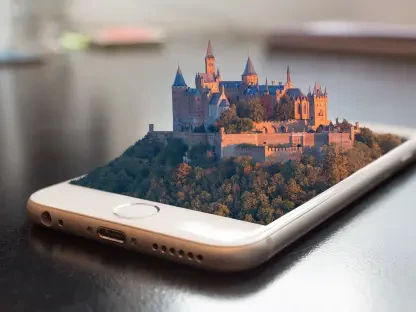In the ever-evolving landscape of urban development, technology has emerged as a key driver, fundamentally reshaping the dynamics of city living. For executives and leaders navigating this terrain, understanding how technological advancements are influencing urban environments is critical. This article delves into the multifaceted ways technology is molding urban living, offering insights into both the opportunities and challenges it presents.
The transformation is profound and multifarious. From smart cities harnessing the Internet of Things (IoT) and Big Data to revolutionize urban infrastructure, to the advent of autonomous vehicles redefining transportation, the impact is far-reaching. This evolution extends beyond physical infrastructure; it’s reshaping economic models, altering social dynamics, and even reimagining public services.
As we explore these developments, we’ll uncover the nuances of how technology is not only enhancing efficiency and sustainability in urban spaces but also raising important questions about privacy, equity, and the future of work. That said, let’s have a closer look at these changes to navigate and harness these trends for future-proofing strategies in urban development.
Smart Cities: The Future of Urban Living
Smart cities; a concept that’s rapidly transitioning from futuristic vision to present-day reality. Imagine a city where everything is connected, from streetlights to public transportation, all working together seamlessly to improve the lives of its residents. That’s the essence of a smart city.
At its core, a smart city employs technology, especially IoT (Internet of Things) and Big Data, to enhance the efficiency and effectiveness of urban services. Think of sensors embedded in roads to manage traffic flow, or smart grids that optimize electricity use in real-time. These are not just conveniences; they represent a fundamental shift in how city infrastructure is managed and experienced.
Around the globe, we’re seeing pioneering examples of smart cities. Take Singapore, for instance. It’s a city that’s almost like a living lab, constantly experimenting and implementing solutions like intelligent transport systems and smart water management. Then there’s Barcelona, which has become a poster child for smart urban planning, using technology to improve public transportation and waste disposal, thereby enhancing the quality of life for its citizens.
The role of IoT and Big Data in these cities cannot be overstated. By collecting and analyzing vast amounts of data, urban planners can make more informed decisions, predict future needs, and swiftly respond to issues. This data-driven approach leads to more responsive, efficient, and sustainable urban environments.
But what makes a city truly smart isn’t just the technology itself; it’s how it’s used to make residents’ lives better. It’s about creating an interconnected ecosystem that supports everything from reducing carbon emissions to ensuring that public transportation is accessible and efficient.
Transportation Revolution in Urban Spaces
Let’s talk about something we all deal with in cities – getting from point A to B. You know how it is, the daily grind of commuting can be a real headache. But here’s the cool part: technology is totally changing the game in urban transportation. It’s like we’re stepping into a sci-fi novel, but it’s real, and it’s happening now.
First off, autonomous vehicles – yes, self-driving cars! They’re not just a futuristic fantasy anymore. Cities are beginning to test these bad boys on their streets. Imagine a world where you hop into a car, tell it your destination, and just sit back and relax. No more stressing over traffic or parking. This could drastically reduce accidents, ease traffic congestion, and even change the way our cities are designed. No more massive parking lots, perhaps?
Public transit is also getting a high-tech makeover. We’re seeing sleek, efficient systems being implemented, with real-time updates at your fingertips. Buses and trains that tell you exactly when they’ll arrive, routes optimized using big data – it’s all making public transport a lot more appealing.
But it’s not all smooth sailing – there are challenges, like making sure these new modes of transport are safe and figuring out the rules of the road (or pavement). And, of course, there’s the big question of accessibility and ensuring these cool innovations are available to everyone, not just a few.
Building Smarter and Greener
Eco-friendly building technologies are not just about slapping some solar panels on a roof anymore. We’re seeing buildings with integrated systems that manage everything from energy usage to water conservation. Think walls that literally breathe, windows that adjust to the light outside, and rooftops covered in gardens! It’s like our buildings are turning into living, breathing entities that work with nature, not against it.
Then there’s the whole smart home scene. Imagine controlling your home’s lighting, heating, even your appliances, all from your smartphone. It’s not just convenient; it’s a game-changer for energy efficiency. You could be halfway to work and realize you left the lights on – no problem, a quick tap on your phone, and voilà! And these smart systems can learn your habits, so your home is always comfy when you’re there and saving energy when you’re not.
The Digitalization of Public Services
The digitalization of public services is all about bringing the convenience of technology right to our fingertips and making those sometimes tedious city processes a lot smoother. For starters, think about e-government initiatives. It’s like the city hall has entered the digital age. Now, many services that require a trip downtown, waiting in line, and filling out endless forms can be done online. Need to pay a utility bill? Renew a parking permit? It’s just a few clicks away. This shift is not only a time-saver for us, but also makes these services more efficient and accessible.
Then, there’s healthcare. Telemedicine is a game-changer, especially in times like these. Imagine getting medical advice, a diagnosis, or even a prescription, all through a video call with a doctor. It’s healthcare on-demand, without leaving the comfort of your home. And in emergencies, digital technology helps coordinate faster, more efficient responses, potentially saving more lives.
Education is getting a tech makeover too. E-learning platforms, digital libraries, and online courses are making education more accessible than ever. It’s a big deal, especially in cities where getting to a physical classroom can be a challenge. Plus, with all these online resources, learning isn’t just for kids; it’s a lifelong journey for everyone.
Final Thoughts
It’s clear that we stand at the peak of a pretty significant transformation. The fusion of technology and city life is not just altering the physical landscape of our urban environments but is also redefining what it means to live, work, and thrive in a modern city. From smart cities pulsating with digital innovation to transportation systems that are both efficient and sustainable, from eco-friendly, intelligent buildings to public services that cater to our needs with just a click, technology is at the heart of this urban metamorphosis.
But as we embrace this tech-enhanced future, it’s crucial to remember that technology is a tool, a means to an end. The true measure of success for these innovations will be how they enhance the quality of life for all city dwellers, bridge inequalities, and create inclusive, sustainable environments. As we move forward, our focus should be on harnessing technology not just for the sake of advancement but to build cities that are truly reflective of the diverse, dynamic, and vibrant communities they house.
This journey through the technology-infused avenues of urban living paints a picture of a future that is exciting and full of potential. It challenges us to think differently about our relationship with our cities and the technology that shapes them. For city planners, policymakers, and every urban dweller, the call to action is clear: engage with, adapt to, and influence this technological revolution in a way that ensures our cities not only grow smarter but become better places to live for everyone.









